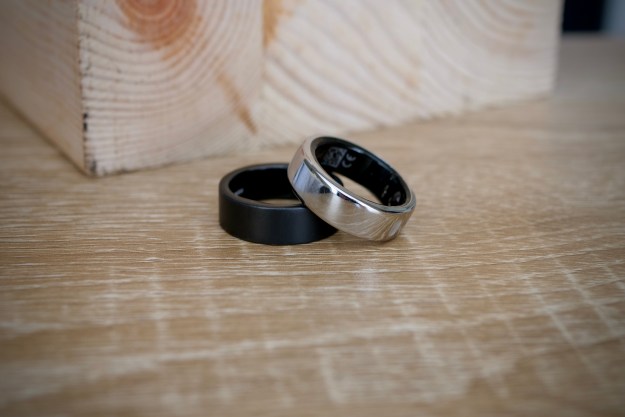
Display aside, however, the device is a pretty powerful one. It has to specs you would expect from any flagship Android phone, and should be able to handle pretty much everything you can throw at it. Here’s everything you need to know about the new Razer Phone, and if you want to see the phone in action, check out our hands-on review of the phone.
Design
The first thing to notice about the Razer Phone is its design, and it looks pretty sleek, if not a little plain. The device itself has sharp-ish corners, similar to what you would expect from a Sony phone. The display comes in at 5.72 inches, but it’s not a big edge-to-edge display that you might find on other 2017 flagship phones — instead the device follows a rather conventional look. Along with that is a slightly large chin and forehead, though they’re not big enough to look too out of place.
On the back of the phone, as you would expect, is the Razer logo and the camera, which is found on the top right-hand corner. New for 2018, the phone is also available in a limited-edition version “gold” color. It’s not the phone that’s gold, but rather the logo on the back, and it was launched in celebration of the beginning of the Year of the Dog on the Chinese calendar. Along with the limited phone, you also get some nice red and gold packaging.

Specs
While the design of the phone may not be all that special, under the hood it has some serious power. For starters, it boasts a Qualcomm Snapdragon 835 processor — Qualcomm‘s flagship processor for 2017, and the one you would expect to see in a flagship Android phone. That processor is coupled with a hefty 8GB of RAM — which obviously makes it a good device for mobile gamers. It also offers 64GB of storage, though that storage can be expanded by up to a hefty 2TB using the included MicroSD card slot.
As mentioned, the display sits in at 5.72 inches, and it has a resolution of 1440 x 2560, which is pretty good. What really sets the display apart from the competition, however, is the 120Hz refresh rate, and it’s not the first with such a refresh rate, it’s still one of the only devices with the feature. You could argue that a 120Hz display on a phone is a gimmick — though some say it provides a much more fluid experience.
The phone also has dual front-facing speakers, which is always better for a great gaming experience, and should help make the phone better for media consumption.
The rear-facing camera is dual-sensor, with one sensor being a 12-megapixel f/1.75 wide-angle sensor, and the other being a 12-megapixel f/2.6 zoom lens. We’ll have to wait and see how the cameras perform in the real world, but the specs suggest it should do pretty well. The front-facing camera comes in at 8 megapixels.
Another interesting feature that sets this phone apart is that it’s the first to support Qualcomm’s Quick Charge 4.0 Plus — so it will be able to charge that 4,000mAh battery nice and quick.
Software
The Razer Phone ships with Android 7.1 Nougat. While Nougat is a bit of a disappointment, the company said an Oreo update will likely come in 2018. The interface is very close to stock
In December, Razer released a software update for the Razer Phone that focused on software improvements for the camera. The December update improved shutter speed as well as color optimization. A quick zoom feature was also added.
At the 2018 Consumer Electronics Show, Razer announced a partnership with Netflix. Razer Phone users will be able to watch their favorite Netflix movies and shows in HDR with Dolby Digital Plus 5.1. Current Razer Phone users will receive an update in January that adds the Netflix app and widget to the phone. The premium Netflix feature, however, will come at a premium price. Users will need to pay $14 a month for Netflix Premium to take advantage of HDR viewing and Dolby Digital Plus 5.1.
Price and availability
The Razer Phone is available online for $700. The phone comes unlocked and works on the major U.S. networks, however, Sprint and Verizon users are out of luck. If you want to see the Razer Phone in action, check out our hands-on review.
Updated on February 2: Added news of limited edition gold Razer Phone.
Editors' Recommendations
- Apple just released iOS 17.4. Here’s how it’s going to change your iPhone
- It’s finally happening — your iPhone is getting RCS in 2024
- The Snapdragon 8 Gen 3 is here, and it’s a big deal for Android phones
- Razer Zephyr Pro finally brings voice amplification to its Bane-like N95 mask
- OnePlus 8 Pro vs. iPhone 11 Pro Max: Twin titan throwdown





